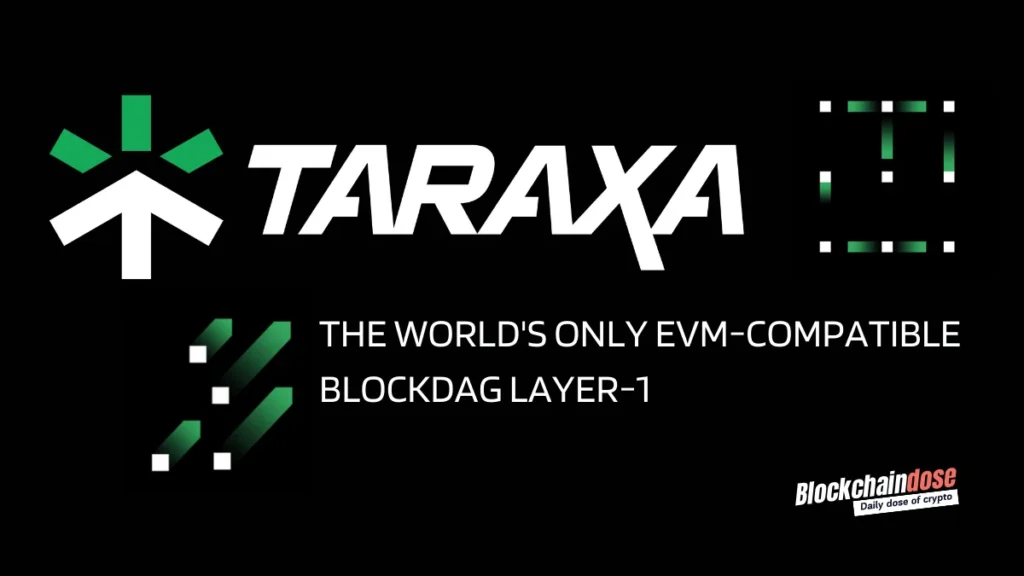Has your hard-earned money ever vanished into the shadows of the internet? Picture this: you wake up to find 120,000 Bitcoin—your digital gold—gone. Stolen in a massive online attack. That was the harsh reality for Bitfinex users back in August 2016. The crypto world was left stunned. As the blockchain space grows, crypto scams get smarter. Criminals keep finding new tricks to fool investors.
This space has always been a battleground. On one side, investors try to grow their portfolios. On the other, scammers work to drain them dry. So, how can you stay protected from these threats? Keep reading.
The Surge In Crypto Scams
On January 31, 2024, news emerged that Ripple, one of the largest crypto networks, suffered a major hack. The reports indicated that the blockchain network was hacked, with the criminals getting away with 213 million XRP, worth about $112 million.
However, reports later indicated that it was not Ripple but rather a top executive’s wallet that was hacked.
In other reports, hackers and malicious actors stole $1.7 billion from crypto projects in 2023. While this was a significant drop from the $4 billion number in 2024, it still displays the prevalence of hacks in the blockchain space.
Major protocols lost millions during the period. Among the significant losses include;
- Mixin Network – $200 million
- Euler Finance – $197 million
- Multichain – $125 million
- Poloniex – $120 million
- Atomic Wallet – $100 million
- Heco Bridge – $99 million
- Curve – $73 million
- CoinEx – $55 million
- KyberSwap – $54 million
- Stake.com – $41 million
How to Spot And Avoid Crypto Scams
No one wants to fall prey to scams. So, how can you protect yourself from the crypto scams highlighted above? Well, here we list many things to do and look at to ensure you stay safe as you navigate this crypto universe.
Among the things to do to spot a crypto scam include:
- Show scepticism when dealing with exaggerated offers – As the old saying goes, when the deal is too good to be true, it probably is.
- Avoid pay-to-play job postings – don’t pay coins to get a job in the crypto realm. If you encounter any such offer, stay away.
- Scrutinize project whitepapers — Look at the project white paper with a keen eye to ensure the authenticity of a project. If the whitepaper is not available or not understandable, it would be better to stay away from the project.
- Don’t fall for the “guaranteed returns” concept – Returns are uncertain in the crypto universe or any other investment.
- Don’t respond to unexpected communications – unsolicited emails, calls, or messages urging you to log into your account for new opportunities are signs of a scam.
- Excessive marketing efforts – Networks doing a lot of marketing campaigns are pure red flags of crypto scams.
- Know the team – A project that fails to display its team members is a potential red flag.
- Be wary of pressure tactics: Scammers often pressure potential investors to inject money quickly. Take your time to research before investing.
- Download Apps from official platforms: To avoid falling prey to crypto scams, it’s crucial that you only use official sites. Only search on Google Play Store or Apple App Store when downloading crypto apps.
- Research: Before making any small investment, thoroughly research the project.
- Never invest more than you can afford.
- Two-factor authentication
Phishing
Phishing is a popular class of cyber scamming that began amassing popularity in the early 2000s. Its primary objective is to trick unsuspecting victims into revealing personal and highly confidential information. Such data includes bank account details, credit card numbers, and passwords.
On gaining the confidential info, the attackers access their prey’s accounts and wipe them clean.
Phishing is a play on the word’ fishing.’ The criminal baits the victims using ‘seemingly legitimate’ offers to access their private info.
How Does it Work?
The attackers contact victims using various channels, including emails, phone calls or even text messages. The deceitful messages are meticulously crafted to appear as if they come from a trustworthy source, a crypto wallet or exchange.
However, the trick is not in the message delivered; instead, it’s the web link accompanying this message.
This web link redirects the user to a counterfeit web page, a mirror image of the legitimate site. Even the web page URL could be a mirror image of an actual crypto network’s official page.
By clicking the link and adding the login data, the victim successfully relays his login details to the attacker who steals funds.
To be successful, the attacker almost always preys on the target’s emotions, instilling fear. They may tell the victim that their account needs instant resolution because of some suspicious activity.
Examples of Phishing in Crypto
What examples do we have of phishing attacks in the crypto realm? Among them include:
- Billionaire Mark Cuban lost nearly $1 million in a phishing attack in September 2023. He downloaded a dodgy version of Metamask wallet.
- Another individual lost about $24 million in September 2023 in a phishing attack. The individual allegedly interacted with a phishing address, giving attackers access to the vast wealth.
How to Stay Safe
After seeing the dangers of crypto phishing, many investors want to know how to stay safe. Here are a few tips:
- Avoid suspicious emails and texts
- Always visit the official website by just typing it out. Don’t click on links given in the emails
- Use 2FA
- Use reputable exchanges and wallets. Bookmark their links.
- Before adding your login details, confirm that you are on the right page.
Rug Pull
A rug pull is a crypto scam where the project founders and developers conspire to defraud the early investors. After securing the community’s trust and earning large numbers of investors, the developers abandoned the project, leaving the tokens worthless.
How Does It Happen?
This type of scam begins with creating a new cryptocurrency token, DeFI or NFT. The developers start inflating the token’s price to maximize the value of their scam.
The newly created token is listed in a decentralized exchange network, paired with a big-name crypto. At this point, the developers increase their marketing efforts across all social networks.
Interestingly, the developers give some unrealistic promises, including 1000x on the tokens. The token garners popularity with heavy marketing, effectively driving its value upwards.
As the token reaches sky price, the developers withdraw all funds in the pair, and the token plummets to zero.
How Prevalent is Rug Pull in Crypto
Well, it’s prevalent. The OneCoin scandal remains the most significant rug pull and stole over $4 billion. Others like AfriCrypto, GainBitcoin, and BitConnect lost about $4 billion.
In 2021, scammers stole over $2.8 billion in crypto, about $7 million daily in rug pulls.
Data analytics for 2023 indicate that in the whole year, there were at least 250 cases of crypto and NFT rug pulls, stealing millions of dollars.
How to Stay Safe from Crypto Scams
With the prevalence of rug pulls in crypto proven, you must know how to stay safe as an investor. Here are a few tips:
- Focus primarily on readily established projects
- Thoroughly research projects and their founders before making any investments
- Be cautious of projects with super high returns
- Projects with no locked liquidity should be avoided
- No reports of any external audit
Pump and Dump Crypto Scams
A pump and dump is a common practice in financial markets, where a group of people artificially inflate an asset’s price. After the token reaches its desired price, they sell (dump) all their holdings and leave the market—pump-and-dump schemes prey on investors’ fear of missing out.
How it Happens
The attacker could start by creating fake insider info, causing massive hype as many rush in to buy the token. The price of the ‘attacked’ token begins to surge as demand also increases. Sometimes, the token could surge 10x in a few hours or days.
This attacker eventually dumps a colossal amount of their holding, wreaking havoc in the token’s markets. The supply becomes too large for the dropping demand, leading to a sharp price plunge, perhaps even below the price pre-P&D.
How Prevalent Are Pump & Dump Schemes?
Well, Very!
The most high-profile P&D scheme in the crypto realm has got to be the SushiSwap case. This UniSwap fork gained value speedily, rising to a market cap of over $1 billion in less than a fortnight.
Chef Nomi, the project’s founder, sold his token holdings for Ethereum, immediately becoming wealthy. However, due to noise from the crypto community, Chef Nomi bought back the SUSHI tokens.
Other cases like Cryptozoo, Squid Game Token, DeFI 100 and Ethereum Max are also significant P&Ds in crypto.
Another crypto token, MIMO, of the project Mimosa, also saw massive price declines from $4 to below $1 after a well-organized P&D scheme.
How to Stay Safe
There are a couple of must-do things to avoid crypto pump-and-dump schemes. They include:
- Do a thorough market chart analysis before investing in a coin
- Invest in something other than crypto purely for the hype.
Business Opportunity
Here, the attacker approaches their prey with a promise of making a high yield on crypto investments—some promise to double your money in only a short while.
Note: There are no guaranteed returns in the crypto world.
The primary idea of business opportunity scams is exploring an investor’s gullibility and general ignorance. You could receive an email promising 1000x returns for crypto investments. Please ignore it at all costs.
To stay safe against business opportunity scams, the most critical thing to do is proper research. It’s the only antidote for the disease, and that is business opportunity crypto scams.
Other Minor Types
- Giveaway crypto scams — Prevalent on social media platform X, these scams promise free coins if you complete assignments.
- Fake job listings — Some scammers could list phoney job opportunities on crypto job listing sites. These jobs demand some crypto payment in advance to get them.
- Impersonation scams — Involves impersonating someone famous like Elon Musk, Cristiano Ronaldo, or Kim Kardashian in a bid to steal from unsuspecting investors.
What Can You Do if You Fall Victim to Crypto Scams?
Okay, there are ways to spot and avoid crypto scams. But what if you have already fallen victim to one? Here are vital steps to take:
- Contact your bank instantly, mainly if you used a bank-linked card to transact
- Contact your crypto service providers, wallet or exchange.
- Share evidence of your loss to the exchange.
Conclusion
In the fast-changing world of cryptocurrencies, many investors get blinded by the promise of high returns and fall victim to crypto scams. These scams come in many forms—phishing, rug pulls, pump-and-dump schemes, and fake business offers.
Always approach investment opportunities with caution. Do your own research and use strong security measures like two-factor authentication (2FA).
FAQs
Very common. In 2023 alone, scammers stole over $1.7 billion from various crypto projects. The tactics are getting smarter each year.
Phishing tricks users into giving away private data, like passwords or seed phrases. Scammers often send fake emails or messages with links to lookalike websites. Once you log in, they steal your funds.
A rug pull happens when developers hype a crypto project, take investors’ money, and then disappear. The token crashes to zero, and investors lose everything.
It’s when a group inflates a coin’s price through hype. Once the price spikes, they sell off their tokens. This crash leaves other investors with big losses.




